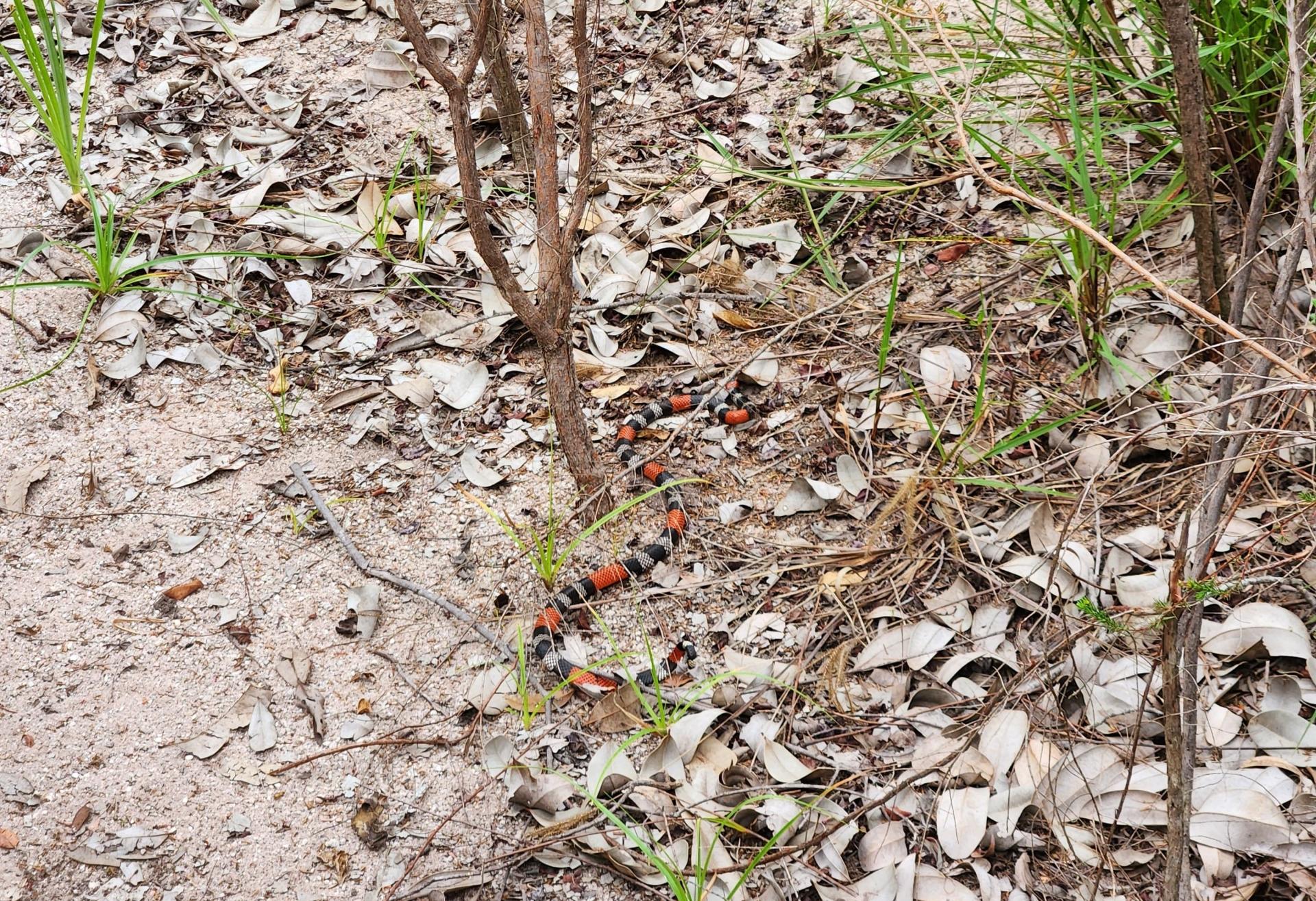Brazil’s Most Venomous Snakes

What travelers should know – and why there’s really no reason to panic
Brazil is world-renowned for its incredible biodiversity – from lush rainforests to savannas and wetlands. And naturally, a country with such rich ecosystems is also home to a wide variety of snake species. Some of them are among the most venomous in the world. But before you worry: snake bites are extremely rare, especially for travelers. With a bit of awareness, you can enjoy Brazil’s wildlife safely and respectfully during your Brazil vacation.
Are snakes in Brazil really dangerous?
Brazil is home to over 400 species of snakes – and the vast majority are non-venomous. Only around 15% are venomous, and even fewer pose a serious threat to humans. Snakes are naturally shy and will only strike when they feel threatened – for instance, if stepped on.
In rural areas, bites from venomous snakes are more common among agricultural workers. But for travelers sticking to guided tours or well-trodden paths, the risk is negligible. Still, it’s worth learning about a few species – both out of curiosity and caution.
Brazil’s most venomous snakes
1. Lancehead Pit Vipers (Bothrops spp.) – Jararaca, Jararacuçu
• Habitat: Widely distributed – Atlantic Forest, Cerrado, Pantanal
• Risk: Most common cause of snake bites in Brazil
• Venom effects: Tissue damage, bleeding disorders
• Fun fact: Excellent camouflage – often goes unnoticed
• Tip: Wear sturdy shoes and stay on marked trails
2. Coral Snake (Micrurus spp.) – True Coral
• Habitat: Found across Brazil, but rarely seen
• Risk: Potent neurotoxin, disrupts muscle function
• Confusion alert: Often mimicked by harmless look-alikes
• Venom effects: Paralysis, respiratory failure (extremely rare bites)
• Tip: Never handle snakes – no matter how small or colorful
3. Bushmaster (Lachesis muta) – Surucucu
• Habitat: Amazon and Atlantic rainforest
• Risk: Largest venomous snake in the Americas (up to 3 meters)
• Venom effects: Powerful hemotoxin, but extremely reclusive
• Tip: Consider yourself lucky if you never see one – they avoid humans
4. Rattlesnake (Crotalus durissus) – Cascavel
• Habitat: Common in dry savanna (Cerrado) and southern Brazil
• Identifier: Rattle at the tail end
• Venom effects: Neurotoxic and anticoagulant properties
• Tip: Be extra cautious when hiking in dry, open areas
How to stay safe while exploring nature
The best part? Staying safe from snakes in Brazil is actually quite simple.
Basic precautions:
- Wear boots or closed shoes when hiking
- Avoid walking through thick undergrowth
- Always watch your step, especially in forests or grasslands
- Be cautious after dark in rural areas
- Don’t try to catch or touch any snake – even if it seems dead
What to do in case of a bite:
- Stay calm
- Immobilize the affected limb and keep it at heart level or lower
- Get medical help immediately
- Do NOT: cut, suck, or tourniquet the bite
Brazil has effective antivenoms and accessible healthcare in all major regions. Most local guides are trained to respond appropriately in case of an emergency.
Fascinating, not frightening
Snakes are an important part of Brazil’s complex ecosystems. They help control pests, serve as prey for larger animals, and are deeply embedded in the biodiversity that makes Brazil so unique.
For most travelers, the chance of even seeing a snake – let alone being bitten – is extremely low. But respecting wildlife and staying informed allows you to fully enjoy Brazil’s nature without unnecessary worry.
Whether you're exploring the Amazon, Pantanal, or Atlantic Rainforest, a mindful approach ensures an unforgettable and safe adventure. If you're planning a nature-focused Brazil trip, Aventura do Brasil can help you integrate wildlife experiences into your itinerary – always with safety, local knowledge, and a sense of wonder in mind.

